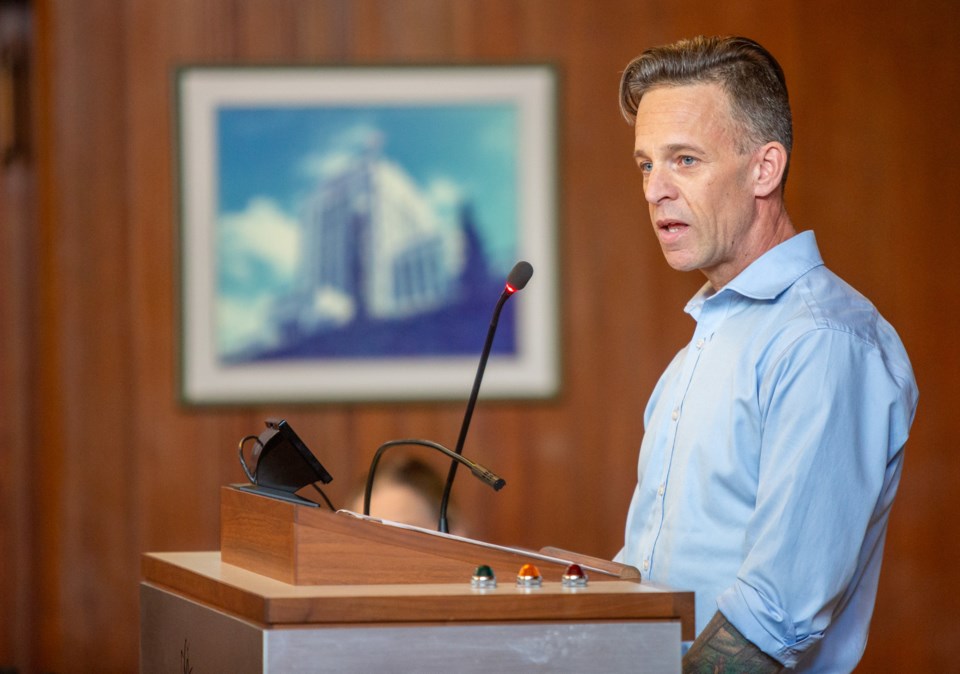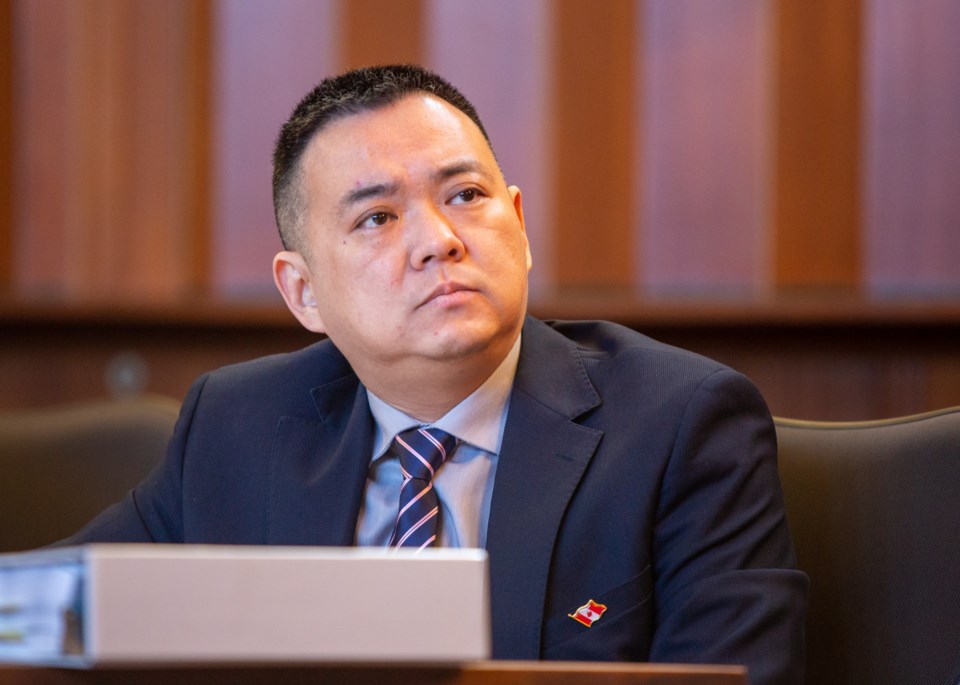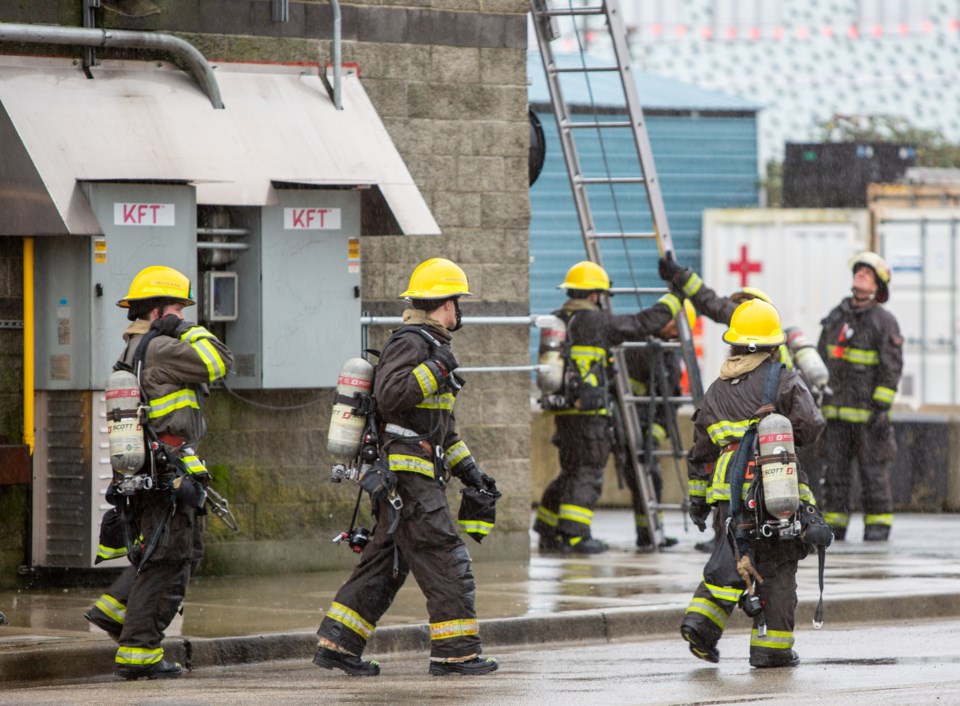A total of 34 Vancouver firefighters have died from work-related cancer since 2017.
It was a sobering fact mentioned Tuesday by firefighter Lee Lax as he argued for city council to approve $2.8 million to buy new chemical-free turnout gear to help reduce cancer risk among firefighters.
In his brief speech, Lax, vice-president of Vancouver Firefighters IAFF Local 18, recognized retired battalion chief, Bruce Tebbett, who died in March 2023.
He was 62.
“After faithfully serving this community for 35 years, Bruce passed away just five years after he retired from this job from an occupational cancer,” said Lax, noting firefighters have been “ringing the alarm” about cancer in firefighting for several years.
Almost 20 years ago, Vancouver firefighter Rob Hall led a successful lobby of the provincial government to have politicians recognize the connection between cancer and the job. Hall was 51 when he died of colorectal cancer in 2007.
Ironically, colorectal cancer was one of the seven types listed as occupational hazards for firefighters in legislation introduced by the B.C. government in October 2005.

'Forever chemicals'
Since that time, firefighters have learned recently the turnout gear they use contain per-and-polyfluoroalkyl substances, which are more commonly referred to by firefighters as PFAS or “forever chemicals.”
Firefighting gear is composed of three layers: an outer shell, a thermal liner and a moisture barrier. Since early 2021, the outer shells and thermal liners of all Vancouver Fire Rescue Services’ turnout gear has not contained PFAS products.
The moisture barrier, however, does include the chemicals, according to a city staff report.
“Given skin contact with PFAS in the moisture barrier component of their gear, firefighters are subject to exposure through daily use and in periods of extreme heat conditions combined with high physical exertion,” the report said.
The report said studies have linked the absorption of PFAS chemicals from turnout gear to cancer risk and other adverse health effects related to behavioural development, metabolism and the circulatory, digestive, endocrine, immune, neurological and reproductive systems.
“The impact to reproductive systems is of particular concern given our trend to diversify our workforce,” said the report, which council reviewed before voting unanimously to approve $2.8 million for the new gear.

'Heart broke'
Coun. Lenny Zhou said his “heart broke” when he read the staff report, which contained sobering facts and statistics. In 2023, for example, 72 per cent of firefighter deaths in the International Association of Fire Fighters were due to occupational cancer, and in Canada, it was nearly 94 per cent.
In addition, 20 per cent of occupational claims with Vancouver Fire Rescue Services are for presumptive cancers.
“Today, we have a chance to change that narrative,” Zhou said.
“We have the opportunity to make a stand for those who have dedicated their life to keep us safe. In approving this report, we are not just investing in the equipment, we're investing in every life of those who rush into danger, where others flee.”
The total spend on the new gear will actually be $3.7 million, with a portion already covered in this year’s budget.
Council’s support Tuesday means the Vancouver department will be the first in North America to use the new chemical-free gear.
'Number one priorities'
Chief Karen Fry said firefighters are grateful for the support from council and are looking forward to getting their new gear, which is expected to be rolled out over the next year, with all firefighters outfitted by January 2025.
Fry noted firefighters have had to limit the training they do in the current gear because of the exposure risk.
Asked how Vancouver managed to get first dibs on the new gear, the chief said:
“The moment that we knew that [the gear] was identified with these PFAS chemicals, our team has been researching and waiting and working with our vendors. So we are on top of it — and with the great support from mayor and council — it has been one of our number one priorities.”
All councillors who spoke thanked Fry, Lax and union officials for pushing to acquire the new gear. Lax noted Mayor Ken Sim early on in his term committed to invest in the gear; Sim was absent from the chamber Tuesday but is expected to be at a news conference Friday where samples of the new gear will be shown.
Health Canada describes PFAS chemicals as a group of more than 4,700 human-made substances that are used in a wide range of products such as lubricants, cosmetics, surfactants, firefighting foams, non-stick cookware, food packaging materials, repellents (for dirt, water and grease) and textiles (carpets, furniture and clothing).
Private member's bill
In March, Adam Olsen, Green Party MLA for Saanich North and the Islands, introduced a private member’s bill — the Firefighter Protection Act — in the legislature to mitigate the risks associated with PFAS exposure in firefighting operations.
"Firefighters face hidden dangers from ‘forever chemicals,’ including flame retardants and PFAS in foam, which threaten their well-being long after the fires are out,” Olsen said in a March 14 news release.
“It's time we prevent harm with better gear regulations. It's our job to protect crews from these unseen dangers, just as they protect us.”
Olsen noted the Vancouver fire department’s move to phase out the PFAS-containing gear, but said the provincial government should invest in all departments — large and small.
“Ensuring equitable access to protective gear across all departments is integral to avoid a two-tier system, where fire services in larger communities have the resources to access PFAS-free protective gear, while smaller, rural fire services may not,” he said.
“The province needs to step up and support everyone willing to join a fire service and put themselves at risk.”



